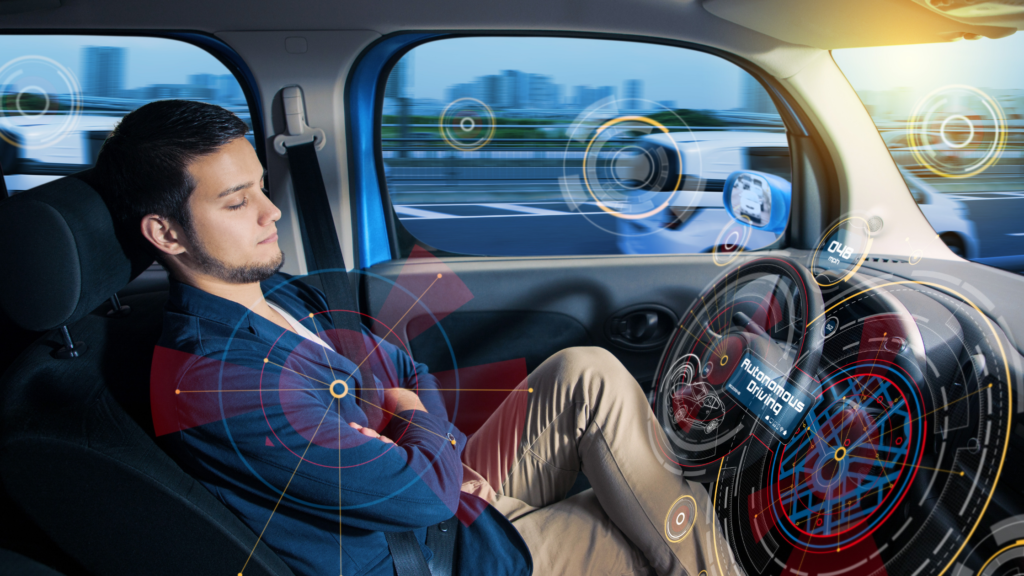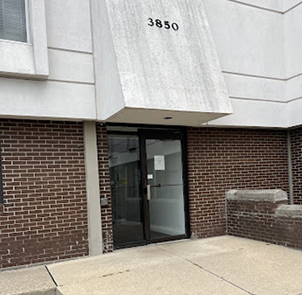Cars That Drive Themselves are Still Miles From Reality

Autonomous vehicles — cars and trucks that let you program in your destination, sit back, read a magazine (or take a nap) and arrive relaxed — are likely years away from hitting the highways, if they ever do materialize. Until that technological miracle takes place, carmakers are working to perfect a variety of features and technologies they hope will make vehicles safer than ever before … by helping keep drivers alert, awake, and aware of their surroundings at all times. Or even by taking control of the car if a driver loses it. Let’s look at a few features that are available now … and some that might be coming to a car near you very soon.
Until Then, Automakers are Coming up With Creative Ways to Help Drivers Avoid Distractions and Stay Safe on the Road
Autonomous vehicles — cars and trucks that let you program in your destination, sit back, read a magazine (or take a nap) and arrive relaxed — are likely years away from hitting the highways, if they ever do materialize. Until that technological miracle takes place, carmakers are working to perfect a variety of features and technologies they hope will make vehicles safer than ever before … by helping keep drivers alert, awake, and aware of their surroundings at all times. Or even by taking control of the car if a driver loses it. Let’s look at a few features that are available now … and some that might be coming to a car near you very soon.
Adaptive Cruise Control — Unlike familiar speed control systems that allow drivers to set their cars’ speed and then simply maintain it until the driver hits the brakes, new systems include what amounts to speed radar capabilities. These advanced systems let the car sense vehicles on the road ahead, and then reduce or increase speed when traffic slows or if a clogged roadway clears. Unfortunately, this innovative safety system is one of the most unpopular of such features with drivers. A study by Erie Insurance found that nearly a third of drivers say they turn off adaptive cruise control systems because people simply don’t want their vehicles controlling themselves. (Engineers working on fully autonomous cars might want to pay attention to this cautionary finding!)
Lane Keeping Assist — This feature originated as a simple tracking program that monitored painted traffic control lines on the road and alerted drivers when they wandered across those yellow or white lane indicators. A (some might say annoying) beeping sound or vibrating steering wheel would make drivers aware when they were weaving or leaving their lanes. More recently, carmakers have updated this feature by making it possible for vehicles to automatically turn the steering wheel slightly to hold the car in its lane. Much like Adaptive Cruise Control, this feature has met some resistance among drivers, 23 percent of whom say they turn it off because they find it disturbing to have their vehicles not fully under their own control.
Heads-Up Display — Imagine a holographic projection of your car’s instrument panel that appears on your windshield, making it possible to drive without ever having to take your eyes off the roadway ahead. You don’t have to imagine it any longer. Many carmakers are making this happen with state-of-the-art Heads-Up Display (HUD) systems which can show you turn-by-turn driving directions, speed, fuel level, engine rpms and more — all right before your wide open eyes. By using an HUD, you can be sure that a momentary glance to check your speed or fuel gauge won’t result in a crash course in traffic accident avoidance.
Beyond these high-tech features, cars are being equipped with numerous other technology based systems that can help reduce distracted driving. Cell phone apps that prevent drivers from texting while their cars are moving are becoming more prevalent. Other apps can block the smart phone’s camera or stop phone calls from being made while the car is in motion. There are also systems that automatically apply brakes for the driver if the car senses an obstacle in the roadway ahead. Some can even attempt to predict when you might be falling asleep, and advise you to stop for a coffee break! But the systems that might be most interesting to parents are those targeted toward making teenage drivers less easily distracted.
Until that technological miracle takes place, carmakers are working to perfect a variety of features and technologies they hope will make vehicles safer than ever before … by helping keep drivers alert, awake, and aware of their surroundings at all times. Or even by taking control of the car if a driver loses it. Let’s look at a few features that are available now … and some that might be coming to a car near you very soon.
Adaptive Cruise Control — Unlike familiar speed control systems that allow drivers to set their cars’ speed and then simply maintain it until the driver hits the brakes, new systems include what amounts to speed radar capabilities. These advanced systems let the car sense vehicles on the road ahead, and then reduce or increase speed when traffic slows or if a clogged roadway clears. Unfortunately, this innovative safety system is one of the most unpopular of such features with drivers. A study by Erie Insurance found that nearly a third of drivers say they turn off adaptive cruise control systems because people simply don’t want their vehicles controlling themselves. (Engineers working on fully autonomous cars might want to pay attention to this cautionary finding!)
Lane Keeping Assist — This feature originated as a simple tracking program that monitored painted traffic control lines on the road and alerted drivers when they wandered across those yellow or white lane indicators. A (some might say annoying) beeping sound or vibrating steering wheel would make drivers aware when they were weaving or leaving their lanes. More recently, carmakers have updated this feature by making it possible for vehicles to automatically turn the steering wheel slightly to hold the car in its lane. Much like Adaptive Cruise Control, this feature has met some resistance among drivers, 23 percent of whom say they turn it off because they find it disturbing to have their vehicles not fully under their own control.
Heads-Up Display — Imagine a holographic projection of your car’s instrument panel that appears on your windshield, making it possible to drive without ever having to take your eyes off the roadway ahead. You don’t have to imagine it any longer. Many carmakers are making this happen with state-of-the-art Heads-Up Display (HUD) systems which can show you turn-by-turn driving directions, speed, fuel level, engine rpms and more — all right before your wide open eyes. By using an HUD, you can be sure that a momentary glance to check your speed or fuel gauge won’t result in a crash course in traffic accident avoidance.
Beyond these high-tech features, cars are being equipped with numerous other technology based systems that can help reduce distracted driving. Cell phone apps that prevent drivers from texting while their cars are moving are becoming more prevalent. Other apps can block the smart phone’s camera or stop phone calls from being made while the car is in motion. There are also systems that automatically apply brakes for the driver if the car senses an obstacle in the roadway ahead. Some can even attempt to predict when you might be falling asleep, and advise you to stop for a coffee break! But the systems that might be most interesting to parents are those targeted toward making teenage drivers less easily distracted.
Parental controls started with TV, but now can come with your car
Since around 1999, televisions sold in the U.S. and Canada have included the “V-chip” — a device that lets parents prevent their children from viewing objectionable programming. (The use of “V-chip” technology was lampooned in a South Park movie back in the day!) Now carmakers have adopted the parental-controls concept as well. For instance, General Motors touts a “Teen Driver” mode that lets parents set limits on vehicle speed and radio volume, among other things, whenever a teen is driving. The system is linked to a specific key fob, which tells the car who’s behind the wheel. What’s more, the system allows parents to generate a driving “report card” so they can see just how their children have behaved while on the road. It functions like an airliner’s “black box,” recording many things the teen driver does in the vehicle, including the car’s top speed, the miles driven, and any risky behaviors that might trigger vehicle stability control. Like the “V-chip,” the GM system even allows parents to censor satellite radio stations that have explicit content! Is the Teen Driver system effective? At last one teenager thinks so, noting in a Forbes article that he modified his driving habits in response to the system’s warnings.Is it too soon to expect a safer car of the-future?
Despite mixed reviews on some of the features we’ve already mentioned, carmakers continue to strive for vehicles that will make accidents less likely and keep people safer on the highway. And it might not be long before tech companies and traditional car manufacturers give birth to fully autonomous vehicles that get us where we need to go without drivers ever having to turn a steering wheel or press a gas pedal. For example, Waymo (as Google’s car-of-the-future is now known) is working with Stellantis (the company formerly known as Fiat Chrysler), among other manufacturers, to develop self-driving vehicles of all types. Apple is said to be getting into the autonomous car business as well, partnering with Hyundai-Kia. GM, Ford, Nissan, and many other companies are also jumping onto the autonomous car bandwagon. But only time will tell which, if any, of these are successful and eventually find their way into your futuristic George Jetson-esque garage. Especially when you consider this tragic incident involving a self-driving car, which resulted in a pedestrian’s death and the back-up driver being charged with negligent homicide.What to do in the meantime?
Whether you have a tricked out vehicle with various technologies intended to help you drive safely, or an antique jalopy that barely has brakes, here are some simple, low-tech tricks you can try to help stay safe and distraction free on the road … and to avoid becoming a car accident statistic yourself:- Open a window (some fresh air may help you stay awake)
- Take a power nap or do some calisthenics (just 20 minutes of sleep or exercise can make a world of difference according to the Cleveland Clinic)
- Stop for coffee (caffeine really can keep you alert according to the National Institutes of Health, while simply stopping for a brief break could help you recover your driving stamina)
- Trade places (letting your spouse or another family member take the wheel helps you share the responsibility — and the grind — of getting safely to your destination)
- Turn on the radio (choosing a station that plays an unfamiliar musical genre could help wake you up)
- Apply your makeup at home (the same advice applies to putting on or taking off a coat or other garments while driving)
- Pull over to eat (spilled spaghetti or overturned tacos might just be the deadly snacks that drive you over the edge)
- Stay comfortable … but not too comfortable (don’t make your car so warm and cozy that you drift off to sleep — or you could end up drifting off the road, too)
Content checked by Mike Morse, personal injury attorney with Mike Morse Injury Law Firm. Mike Morse is the founder of Mike Morse Law Firm, the largest personal injury law firm in Michigan. Since being founded in 1995, Mike Morse Law Firm has grown to over 250 employees, served 100,000 clients, and collected more than $2 billion for victims of auto, truck and motorcycle accidents. The main office is in Southfield, MI but you can also find us in Detroit, Sterling Heights and many other locations.





















